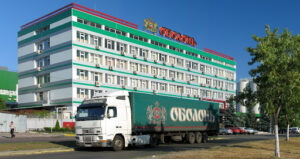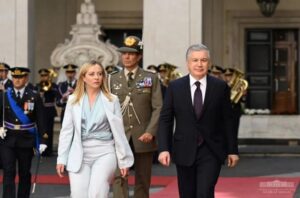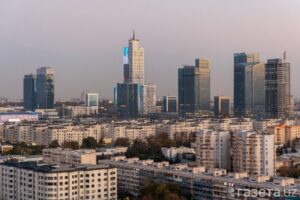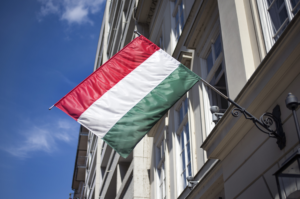
Obolon PrJSC, one of the largest producers of beverages in Ukraine, received UAH 1.248 million in net profit in 2024, which is 1.47 thousand times less than a year earlier, and will use it for the company’s development.
According to a report in the disclosure system of the National Securities and Stock Market Commission (NSSMC), the shareholders are to make the relevant decision at a remote general meeting on April 25.
The shareholders are proposed to approve the report of the Supervisory Board and the results of the company’s financial and economic activities for 2024, to prolong the audit services agreement with Grant Thornton Legal LLC on the existing terms, to take note of the conclusions of its audit report for 2024, and to approve the measures.
The shareholders should amend the company’s charter to elect members of the supervisory board (independent directors) and set their remuneration, and authorize the company’s president to sign civil law contracts with members of the supervisory board. It is proposed to approve Yevhen Rymar and Ihor Singayevsky as two independent directors.
Earlier, in March 2025, Obolon PrJSC changed its internal auditor to Iryna Kondratenko, who has been working as a pricing economist at the company for the past five years.
According to the Opendatabot service, in 2024, Obolon PrJSC received UAH 12.87 million in revenue, compared to UAH 10.76 billion a year earlier. At the same time, the company’s debt obligations increased by 14.9% to UAH 1.64 billion, and assets by 31.9% to UAH 9.238 billion, the number of employees by 108 people to 2164 employees. The authorized capital of the company is UAH 32.512 million.
Obolon Corporation produces beer, soft and low-alcohol beverages, mineral water, snacks, and is the country’s largest beer exporter. It has a main brewery in Kyiv and nine plants in the country’s regions.
Its main brands are Obolon, Carling, Zlata Praha, Hike premium, Zibert, Keten, Hardmix, BeerMix, Desant, Zhyhulivske, Zhyvchyk, Obolonska, and Prozora. The corporation also produces low-alcohol drinks Rio, Gin and Tonic, Lime Vodka, Whiskey Cherry, Rum-Cola, Brandy-Cola, and Ciber.

Italian Prime Minister Giorgia Meloni will pay an official visit to Uzbekistan on April 25-26. Negotiations and meetings will be held in Samarkand, the press service of the Italian government reported.
On April 27, the Central Asia-Italy summit will be held in Astana with the participation of Kazakhstan, Kyrgyzstan, Tajikistan, Turkmenistan and Uzbekistan.
For reference, in August 2024, Giorgia Maloney made a brief stop in Tashkent on her way from China. She met with Uzbek Foreign Minister Bakhtiyor Saidov.
Georgie Maloney’s visit will continue the political dialogue between the two countries. In June 2023, President of Uzbekistan Shavkat Mirziyoyev visited Italy, where a declaration of strategic partnership and agreements worth more than €9 billion were signed .
At the end of 2024, the trade turnover between Uzbekistan and Italy amounted to $438 million, of which Uzbekistan’s exports amounted to $44.6 million and imports to $393.4 million.

Starting from June 1, 2025, Uzbekistan will introduce a simplified procedure for obtaining a 5-year residence permit for foreign citizens and stateless persons. This rule is enshrined in the presidential decree of April 18, the Ministry of Justice reports.
To obtain the document, the applicant must pay $200,000, as well as $100,000 for each family member – spouse, children and parents.
Currently, residence permits in Uzbekistan are issued to certain categories of citizens:
– foreign citizens or stateless persons permanently residing in the territory of the Republic of Uzbekistan – upon reaching the age of 16
– persons who have received a permanent residence permit in Uzbekistan in accordance with the procedure established by the Regulations, including persons who have returned to the country and whose Uzbek citizenship has been terminated by law;
– citizens of the countries included in the List of countries whose citizens are entitled to obtain a residence permit in Uzbekistan subject to the acquisition of real estate in Tashkent region and Tashkent city – for the equivalent of at least $300 thousand, Samarkand, Bukhara, Namangan, Andijan, Fergana and Khorezm regions – for the equivalent of at least $200 thousand, in Karakalpakstan and other regions of the republic – for the equivalent of at least $100 thousand;
– persons who permanently reside in Uzbekistan but have not acquired Uzbek citizenship or whose Uzbek citizenship has been terminated by law.
Programs under which foreign nationals are granted a residence permit in exchange for significant investments in the country’s economy are in place in a number of foreign countries (e.g., Portugal, Spain, UAE). Their goal is to attract capital and wealthy foreign investors to the country.

Experts Club Information and Analysis Center has analyzed the inflation rate in Hungary and its trends in Hungary in recent years. Inflation in Hungary in 2025 continues to decline after record highs in 2022-2023. As of March 2025, annual inflation stood at 4.7%, down from 5.6% in February.
The main drivers of inflation
The decline in inflation is due to stabilizing food and energy prices. However, rising rental prices and services continue to put pressure on the overall price level
Government and central bank measures
The central bank of Hungary maintains the key interest rate at 6.5% to contain inflationary pressures. The government is taking steps to control prices in key sectors of the economy.
Outlook
Experts expect inflation to continue to decline to around 3.5% in 2026, approaching the central bank’s targets
Year Inflation (%)
2000 9,79
2001 9,15
2002 5,26
2003 4,66
2004 6,75
2005 3,56
2006 3,90
2007 7,95
2008 6,06
2009 4,20
2010 4,87
2011 3,93
2012 5,66
2013 1,71
2014 – 0,23
2015 -0,07
2016 0,40
2017 2,35
2018 2,84
2019 3,37
2020 3,33
2021 5,11
2022 14,61
2023 17,13
2024 3,8
2025 4.7 (March)

AXOR Industry has invested a total of EUR 40 million in the launch, expansion and development of its window and door hardware plant in Dnipro since 2011, First Deputy Prime Minister and Minister of Economy Yulia Svyrydenko has announced.
“In 2011, AXOR built a plant in Dnipro, with initial investments of EUR 25 million. When a full-scale war broke out, the company not only maintained production but also continued to develop. In 2022-2023, it invested in new production facilities. Currently, the total investment amount is EUR40 million,” she wrote on her Facebook page on Monday.
According to the report, the plant in Dnipro has a capacity of 8 million sets of fittings per year. Svyrydenko emphasized that this is one of the largest plants of its kind in Eastern Europe. AXOR exports its products to 27 countries.
“I am sincerely grateful to AXOR Industry, which proves that war is not an embargo on investment. The private sector of other countries, despite the challenges, is ready to invest in our country right now,” she said.
According to Opendatabot, the founders of AXOR Industry LLC are Funama Holdings Limited (Cyprus), AMC Altus Assets Assets in the interests of Altus Industrial Mutual Fund (Dnipro) and Basera Holding Limited (Malta). The ultimate beneficiaries are Mustafa, Hassan and Oan Irem Basher, as well as Sofia Kononenko.
In addition, in 2024, Vadym Iermolaiev, the owner of Alef Corporation, who was included in the Ukrainian sanctions list for 10 years in 2023, was removed from the list of beneficiaries.
In 2024, AXOR Industry increased its revenue by 5.6% to UAH 627.8 million and its net profit by 18.4% to UAH 19.5 million.

Experts Club has published a study on the dynamics of industrial production in Croatia and its trends in recent years. In the beginning of 2025, industrial production in Croatia shows moderate growth, despite fluctuations in previous months. According to the Croatian Bureau of Statistics, industrial production increased by 5.4% in February 2025 compared to the same period of the previous year. This is a slowdown compared to January 2025, when growth was 7.6%.
The following industries recorded the highest growth in February 2025.
At the same time, consumer goods production declined:
Monthly trends
Compared to January 2025, industrial production fell 3.9% in February. This is the first decline in the last three months, indicating instability in the industrial sector.
Historical dynamics of industrial production (2000-2024)
Below are the dynamics of industrial production in Croatia for the period from 2000 to 2024:
These data reflect fluctuations in Croatia’s industrial production over the last 25 years, with periods of both growth and decline.